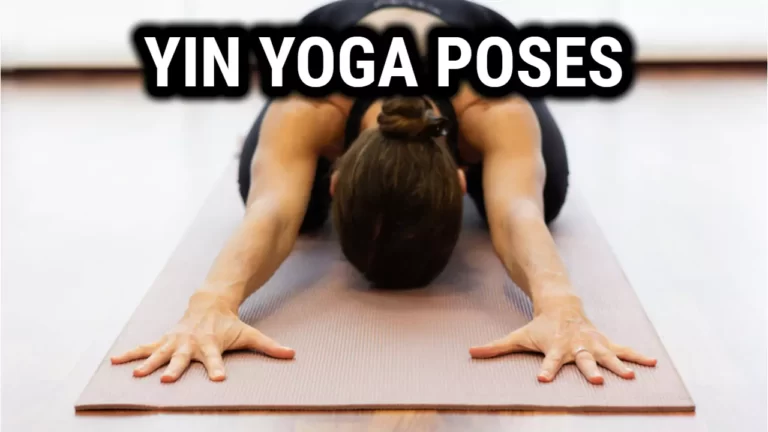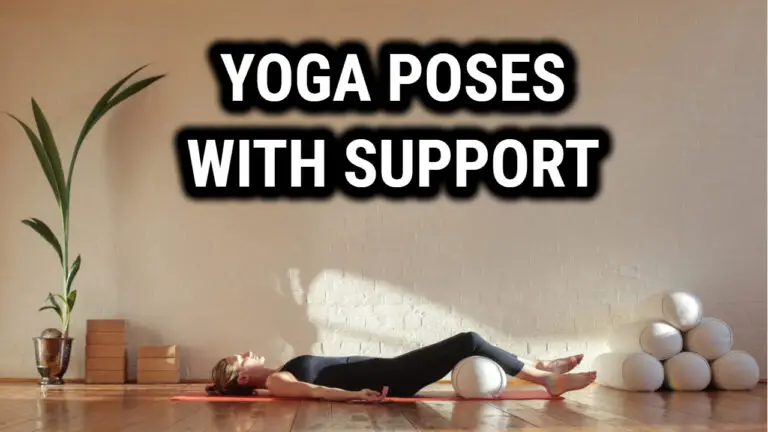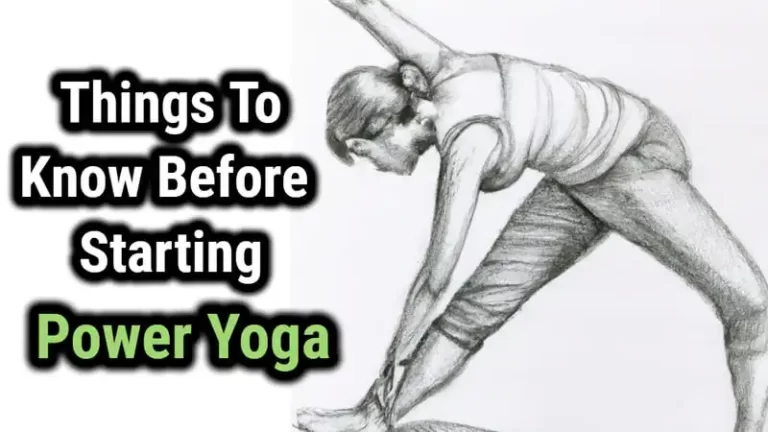What Poses Of Yoga Help In Gaining Muscle?

Yoga is a popular form of exercise that has been practiced for centuries. It is known for its ability to improve flexibility, balance, and mental clarity. However, yoga can also be an effective way to gain muscle. Certain poses can help build strength and increase muscle mass, making it a great addition to any fitness routine.
While yoga may not be the first thing that comes to mind when thinking about building muscle, it can be a great way to supplement traditional strength training exercises. Yoga poses that require holding the body in a static position can help build endurance and increase muscle tone. Additionally, poses that require balance can help improve overall stability and coordination, which can translate to better performance in other types of exercise.
Understanding Yoga for Muscle Gain
Yoga is an ancient practice that has been used for centuries to improve physical, mental, and spiritual health. While yoga is often associated with flexibility and relaxation, it can also be an effective way to build muscle. By practicing specific yoga poses, individuals can target and strengthen different muscle groups throughout the body.
Yoga poses that focus on building muscle typically involve holding the pose for an extended period of time, using bodyweight as resistance. This type of training is known as isometric training and has been shown to be effective in building muscle and increasing strength.
The benefits of using yoga for muscle gain extend beyond just physical changes. Yoga can also help improve flexibility, balance, and posture, all of which can contribute to better overall health and well-being.
It is important to note that while yoga can be an effective way to build muscle, it should not be relied upon as the sole form of exercise for muscle gain. Incorporating other forms of strength training, such as weightlifting or bodyweight exercises, can help provide a well-rounded approach to building muscle and improving overall fitness.
Poses for Building Muscle Strength
Yoga is not only an excellent way to increase flexibility and reduce stress, but it can also help build muscle strength. Incorporating these yoga poses into your routine can help you gain muscle and improve overall body strength.
1. Chair Pose (Utkatasana)
This pose is excellent for building strength in the thighs, glutes, and lower back. To perform this pose, stand with your feet hip-width apart and raise your arms overhead. Bend your knees and lower your hips as if you were sitting in a chair. Hold for several breaths before releasing.
2. Warrior II (Virabhadrasana II)
Warrior II is a great pose for building strength in the legs, hips, and core. To perform this pose, stand with your feet wide apart and turn your right foot out to the side. Bend your right knee and extend your arms out to the sides. Hold for several breaths before switching sides.
3. Downward-Facing Dog (Adho Mukha Svanasana)
This pose is excellent for building strength in the arms, shoulders, and upper back. Start on your hands and knees and lift your hips up and back, forming an inverted V-shape with your body. Press your hands and feet into the ground and hold for several breaths.
4. Crow Pose (Bakasana)
Crow pose is an advanced pose that requires significant upper body strength. To perform this pose, start in a squatting position with your hands on the ground. Shift your weight forward and lift your feet off the ground, balancing on your hands. Hold for several breaths before releasing.
By incorporating these poses into your yoga practice, you can build muscle strength and improve overall body strength.
Poses for Muscle Toning and Definition
Yoga is often associated with flexibility and relaxation, but it can also be an effective way to build muscle and increase strength. Here are some yoga poses that can help you tone and define your muscles:
- Plank: Plank is a simple but effective pose for building core strength. Start in a push-up position, then lower yourself down onto your forearms. Keep your body in a straight line from head to heels, engaging your abs and glutes.
- Chair Pose: Chair pose is a challenging pose that works the legs, glutes, and core. From a standing position, bend your knees and lower your hips as if you were sitting in a chair. Keep your chest lifted and your arms extended overhead.
- Boat Pose: Boat pose is a great way to work your abs and hip flexors. Sit on the ground with your knees bent and your feet flat on the floor. Lean back slightly and lift your feet off the ground, extending your arms out in front of you. Hold for several breaths.
Remember to listen to your body and take breaks as needed. With consistent practice, these poses can help you build strength and definition in your muscles.
Poses for Increasing Flexibility and Range of Motion
Yoga is an excellent way to increase flexibility and range of motion. By practicing yoga regularly, one can improve their overall flexibility and range of motion, which can help to prevent injuries and improve overall physical performance. Here are some yoga poses that can help in increasing flexibility and range of motion:
Forward Fold
Forward Fold is another excellent yoga pose for increasing flexibility in the hamstrings and lower back. To practice this pose, stand with your feet hip-width apart and fold forward, reaching for your toes or the ground. Keep your knees slightly bent if necessary, and hold the pose for several breaths.
Pigeon Pose
Pigeon Pose is an intense hip opener that can help to increase flexibility in the hips and thighs. To practice this pose, start on your hands and knees and bring your left knee forward, placing it behind your left wrist. Stretch your right leg back behind you, keeping your hips square. Hold the pose for several breaths, then switch sides.
By practicing these yoga poses regularly, one can increase their overall flexibility and range of motion, which can help to prevent injuries and improve physical performance.
Related Read: Yin Yoga Poses for Relaxation and Flexibility
How To Properly Execute Poses
Yoga poses are a great way to gain muscle when done properly. To ensure proper execution of each pose and ensure effective muscle building, there are several things to keep in mind:
- Understand your body alignment: It’s important to be aware of your body’s alignment while performing any yoga pose. Aligning your body correctly can help you target the right muscles and maximize the benefits of your practice. Make sure you’re engaging the correct muscles and keeping tension in them throughout the pose.
- Consider your fitness level: The level of difficulty for each pose will vary depending on individual fitness levels. If you’re just starting out, take it slow and focus on proper form until you become comfortable with the movements. As your practice progresses, challenge yourself by moving deeper into each pose and increasing repetitions.
- Modify poses as needed: Don’t be afraid to modify poses or use props such as blocks or straps if you need additional support while holding a posture. This can help prevent injury while still allowing you to reap the benefits of each pose.
By following these simple guidelines, you can make sure that every yoga pose is performed safely and effectively so that you can build muscle and reach your goals!
Nutrition For Supporting Muscle Growth
Now that you have designed a routine for maximum results, it’s time to turn your attention to nutrition for supporting muscle growth. To build muscle effectively, you should focus on consuming the right mix of macronutrients and micronutrients.
A muscle building diet should include high-protein foods such as lean meats, fish, eggs, dairy products and legumes. Healthy carbs like oatmeal, quinoa, sweet potatoes, brown rice and fruits are also great sources of energy and help fuel the body during workouts.
Additionally, healthy fats like avocados, nuts and olive oil should be included in your diet to support muscle recovery.
You may want to consider taking muscle gaining supplements such as creatine or whey protein powder to help support your fitness goals. Make sure to consult with your doctor before beginning any kind of supplement regimen.
Supplements can offer extra benefits but shouldn’t replace a balanced diet of nutritious foods. When creating a meal plan for building muscle nutrition, create an outline that includes all three macronutrients — carbohydrates, protein and fat — at every meal.
This will help ensure you’re getting enough nutrients for optimal performance in the gym and adequate recovery afterwards.
When it comes to fueling your body with the proper nutrition for supporting muscle growth, it’s important to focus on eating wholesome foods packed with vitamins and minerals while avoiding processed foods as much as possible.
Eating a balanced diet is essential for reaching peak performance levels in the gym while helping ensure that you recover quickly after each workout session.
Also Read: Yoga vs. Aerobics: Which One Reigns Supreme for Your Fitness Goals?
Wrapping Up
Yoga is a great way to build muscle and gain strength. By practicing a combination of strength-building poses and using proper alignment and breathing techniques, individuals can increase their muscle mass and improve their overall physical health.
Some of the most effective yoga poses for building muscle include the downward-facing dog, plank pose, warrior II pose, and triangle pose. These poses target multiple muscle groups and can be modified to accommodate different levels of experience and flexibility.
It’s important to remember that building muscle through yoga takes time and consistency. It’s also important to listen to your body and avoid overexertion or injury. By incorporating yoga into a regular fitness routine and focusing on proper form and technique, individuals can achieve their muscle-building goals in a safe and sustainable way.





